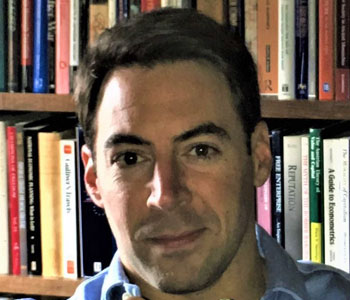Brent Stockwell
The Quest for the Cure: The Science and Stories Behind the Next Generation of Medicines
Columbia University Press
284 pages, 6 x 9 inches
ISBN- 978 0231152129
Over the last 15 years, the annual number of approved new drugs has been declining dramatically. Meanwhile, the pharmaceutical industry, as well as academic and government researchers, have dramatically increased the amount of money spent on drug discovery and development. Why is the large increase in funding not translating into new medicines?
One explanation for this failure is that we are running out of tractable drug targets.
Drugs function by interacting with, i.e. attaching to, specific proteins within the body, which are called “drug targets.” However, only 2% of the proteins found in humans have been targeted with drugs.
Most of the remaining proteins are considered “undruggable,” meaning it is difficult or perhaps impossible to make drugs that interact with these proteins.
If this is true, then we are really running out of drug targets—and therefore running out of new drugs.
And this could be the explanation behind the challenging state of drug discovery, the decline of the pharmaceutical industry and the paucity of new medicines.
Proteins are large molecules with specific three-dimensional shapes. The more tractable proteins have large crevices, or pockets, on their surfaces. Here is where small molecule drugs can snugly fit. And when this happens, the drug alters the function of the protein. Which, in turn, can lead to a change in the course of a patient’s disease.
Undruggable proteins generally don’t have large pockets on their surfaces. Instead, from the perspective of a small molecule drug, they look relatively smooth and featureless.
The majority of proteins are considered undruggable. These proteins control nearly every disease process, from many types of cancer to neurodegenerative diseases such as Alzheimer’s, Parkinson’s and Lou Gehrig’s, to many other diseases.
One approach for tackling these proteins is to create huge collections of candidate drugs (thousands or even millions of them) and to use advanced robotic systems to rapidly test for any that affect undruggable proteins.
A second approach is to design drugs using sophisticated computer algorithms—by trying to find a way to get a foothold on the surface of these proteins.
Another exciting strategy is to build larger molecules that have a better ability to interact with the undruggable proteins, and then to solve the issue of how to deliver these larger molecules into a target tissue, such as a tumor.
All three are currently areas of active research—but one may hold the key to solving the mystery of the undruggable proteins.

The majority of proteins are considered undruggable. These proteins control nearly every disease process, from many types of cancer to neurodegenerative diseases such as Alzheimer’s, Parkinson’s and Lou Gehrig’s, to many other diseases.
Given the declining number of new drugs, and the crisis in the pharmaceutical industry, many are asking what can be done.
The Obama administration has proposed a new initiative to help address our drug shortage: to create a new center within the National Institutes of Health (NIH), focused on aiding the discovery and development of new medicines.
This controversial new center, called the National Center for Advancing Translational Sciences, is meant to catalyze the transfer of discoveries from basic science laboratories to clinical studies that involve patients, and eventually into commercial products. On a practical level, the center can help to move discoveries down the drug discovery path to the point that they become attractive for commercial entities to adopt and invest in.
Pharmaceutical and biotechnology companies and venture capitalists have become increasingly conservative in their investment strategies, especially since the economic disruptions in 2008. This conservatism has resulted in a lack of investment in early-stage technologies and drug candidates, making it difficult to translate these discoveries into a commercial and clinical setting. The well-known “valley of death” that separates basic sciences from commercial and clinical translation has grown larger and more ominous. By assisting the development of selected technologies and compounds through the early stages of drug discovery and development, the new NIH center could help to bridge this valley and bring the most promising technologies to market.
But there is a more significant challenge to discovering new medicines than simply bringing basic discoveries to market. So if the new NIH center were to focus on a simple catalyst role, it would represent a lost opportunity.
The more fundamental challenge to discovering new drugs involves the basic science issue of protein druggability. It is this that could have a far more significant impact on the number and type of future medicines.
It is possible that new technologies and approaches could solve the challenging problem of protein druggability. However, if we abandon the undruggable proteins, we abandon the hope for truly transformative medicines. We must be able to translate the vastly detailed molecular networks emerging from basic science studies into therapeutics.
Currently, many of the root causes of diseases are considered undruggable and cannot be addressed directly with medicines. If we could solve the mystery of protein druggability, we could open up a vast number of possibilities for new medicines, and ultimately end the drug discovery crisis.
In 1957, during a cleanup of his lab at the pharmaceutical company Roche, Leo Sternbach discovered an old flask containing a chemical he had synthesized previously, but discarded for lack of interest. On a lark, he decided to have it tested for its anti-anxiety potential, a therapeutic area he had become interested in.
The chemical, of an unknown identity, turned out to have striking anti-anxiety activity, superior to the existing marketed drugs of that era. Within three years, Sternbach was able to figure out the identity of the chemical and have it approved for use in patients—a remarkable success, considering that drug development nowadays takes 10 to 15 years.
This chemical was the first of the benzodiazepines, a class of drugs with a specific shape and structure that is powerful for treating anxiety.
Some years later, Ben Evans and his colleagues at Merck discovered that benzodiazepine derivatives were also effective in treating other diseases and in interacting with other types of proteins. He suggested that this class of molecules is “privileged,” in the sense that it is especially effective at interacting with proteins and altering the course of disease.
Other privileged molecular structures have since been discovered, and these molecules might be the key to addressing the undruggable proteins. Since these privileged compounds are so effective at interacting with numerous classes of proteins, they may be effective starting point to look for new drugs against the supposedly undruggable protein targets.

Many of the root causes of diseases are considered undruggable and cannot be addressed directly with medicines. If we could solve the mystery of protein druggability, we could open up a vast number of possibilities for new medicines, and ultimately end the drug discovery crisis.
Only a small number of researchers have focused on the undruggable proteins—it is an understudied area. I would like to see a concerted effort by the biomedical community to address this grand challenge of our time.
In addition, there is an opportunity to educate students at every level about this fundamental scientific problem that has direct practical implications.
By introducing the challenges associated with creating new medicines to curricula, we could teach students key aspects of chemistry, biology, pharmacology and medicine, and hopefully stimulate the best minds to struggle with, and solve, this problem of the undruggable proteins.
The future of medicine is balanced on the fulcrum of the undruggable proteins. Depending on the outcome of investigations, we either face a bleak future filled with incurable diseases, or a bounty of transformative new medicines.
I am optimistic that with a devoted effort, the research community will eventually solve the challenge of the undruggable proteins and the incurable diseases they control.




We don't put paywalls. We don't distract you with ads. We don't sell your data.
Please help to keep this running!